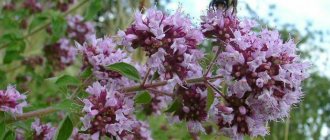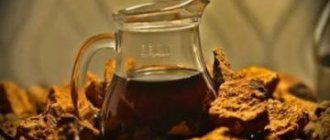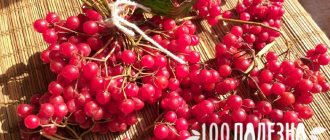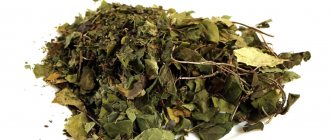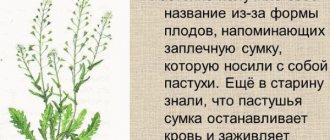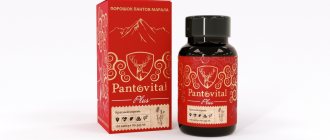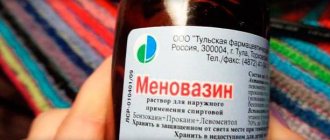Kalanchoe is a large genus of perennial plants of the Crassulaceae family. Today, more than two hundred species of plants are known that grow in the tropics, Southeast and South Africa, Australia, some are grown as ornamental plants. The greatest species diversity (about 100) is found on the African continent, somewhat less in Central America, Australia, South Asia, Mexico, Cape Verde, Hawaii, the Caribbean and the Canary Islands.
The most common types of Kalanchoe, which have medicinal properties and are used in recipes of traditional and official medicine, especially for the treatment of ENT pathologies (for the runny nose, sinusitis), are:
- Cirrus (Kalanchóe pinnata) is the most studied species, used in official medicine for the preparation of pharmaceuticals. It is this type, as it is more studied, that should be used in home recipes;
- Blossfeldiana (Kalanchoe blossfeldiana) is a less studied variety, but is also used by herbalists;
- Degremona (Kalanchoe daigremontiana) is a crop that most often appears in traditional medicine recipes. Some Western sources report the toxicity of all parts of this plant species, but there are no recorded cases of poisoning in humans.
A feature of plants is their ability to take water from the air, which determines their high survival rate in unfavorable conditions and adaptability to such conditions.
Morphological description
Kalanchoe pinnate
It can reach a height of up to 2 m, has a strong, fleshy stem, tree-like below. On the stem opposite each other are petioled leaves, slightly pubescent with hairs, having a round shape and a glossy surface. Often, leaf buds are formed in the recesses of the teeth, which are intended for vegetative propagation.
The plant blooms irregularly and not strongly; flowering often occurs in the cold period of the year. The inflorescences are axillary panicles: large bisexual flowers sit on the pedicels. Each Kalanchoe flower is the basis of 4 fruit-boxes, which are surrounded by the remains of a corolla. The seeds are small, oval.
Kalanchoe Degremona
This is a popular variety of the genus, the peculiarity of which is the presence of children located on the edges of the leaves. The babies fall off the leaves very easily and quickly take root. The crop is not tall, up to 50 cm, the stems most often creep, so they need support. The leaves are oblong, pointed, dark green. Flowering occurs in winter - the flowers are bell-shaped, large, pink-violet in color.
Kalanchoe Blossfeld
This is a popular plant with numerous bare, weakly branched stems. The height of the plant reaches up to 30 cm. The leaves are round or ovoid in shape, green or dark green in color. Sometimes there is a red border along the edge of the leaf. It blooms for a long time, from the beginning of winter to the beginning of summer. Flowers of dark red, pink, yellow or orange reach a diameter of up to 1 cm, collected in inflorescences in the shape of brushes.
Variety of useful substances
Nature has generously endowed the plant with everything that can prolong life. A storehouse of microelements, enzymes, vitamins and minerals that determine the energy value of the plant. The benefits of Kalanchoe for humans are obvious, since it contains:
- trace elements: iron, magnesium, zinc and aluminum;
- useful acids: oxalic, ascorbic and tannic, fruit;
- polyphenols;
- glycosides;
- vitamins A, B, C, E, P;
- water.
It’s not for nothing that the plant is called homemade ginseng.
History and popularization of Kalanchoe
The healing properties of Kalanchoe were known in ancient times - residents of the island of Madagascar, which is considered the historical homeland of the culture, were actively treated with the juice of the plant both internally and externally. In a number of countries, the plant has found use in the treatment of tuberculosis. On the territory of modern European countries, where the plant was imported as a medicinal plant, there were many adherents of unconventional treatment, for example, Johann Goethe daily ingested Kalanchoe “babies”, which, in his opinion, had a rejuvenating effect.
The plant attracted the attention of scientists only in 1962, when notes began to appear about the so-called “indoor ginseng,” which eliminated many diseases forever.
The first clinical trials were organized in 1966. The fresh juice of the plant was used to treat fistulas, wounds and burns in several patients, which healed very poorly. The result of the experiment was positive and proved that Kalanchoe has medicinal properties and can be used internally and externally.
The plant juice quickly gained popularity and began to be produced on an industrial scale. A little later, ointments appeared. All drugs were used to heal wounds, cleanse them of necrotic masses and eliminate inflammatory phenomena.
The legend of the Kalankh flower
The miraculous healing of a Russian sailor on an island in South Africa has been known since the eighteenth century. A dangerous fever struck a sailor on a merchant ship, which is why he had to stay on the African island to die. But fate gave him sympathy from local residents, who told him that in order to preserve life, he needed to eat the leaves of the plant “kalankh”, which translated meant “health”. It must be said that this flower grew very abundantly on the island, and the patient, having listened to the advice of the aborigines, was healed. It is not difficult to guess that Russian sailors, taking a comrade from the island, took with them a medicinal plant, which later spread throughout the world.
Collection and preparation
Since Kalanchoe is an indoor plant, it should not be prepared in advance. However, experienced herbalists do not entirely agree with this position and recommend special preparation of the plant before preparing dosage forms.
The best time to harvest leaves is from the beginning of August to the end of October. The required number of leaves are cut from the plant, washed in water and placed in a dry, dark and cool place for 7 days. It is believed that during this period the leaves actively accumulate biogenic stimulants. Next, the leaves are crushed to a semi-liquid mass and the juice is squeezed out of them. The resulting raw material is quite cloudy, so it can be left in the refrigerator for several days, then filtered and used for its intended purpose.
For long-term storage of juice, it is necessary to ensure its sterility - dilute it with medical alcohol in a ratio of 5:1 and place it in the refrigerator for storage. Such raw materials can be used within 1 year.
Contraindications
In ancient times, when there were no medicines at all, healers treated people with the help of plants. In the modern world, such treatment serves only as an auxiliary therapy, which should be used only after consultation with a doctor. Otherwise, instead of benefit, you may end up with new health problems, the treatment of which will require additional costs and more time.
Kalanchoe has some contraindications that are worth considering:
- Low pressure
- Pregnancy
- Presence of tumors
- Allergy and individual intolerance
- Chronic liver diseases
Chemical composition
Kalanchoe leaves, which are the raw material for obtaining dosage forms, contain:
- a large number of micro- and macroelements (magnesium, aluminum, copper, calcium, iron and manganese), which have a positive effect on the course of redox processes, hematopoiesis, blood clotting reactions, and also participate in muscle function;
- enzymes - natural catalysts, protein organic substances that regulate metabolism, accelerating all chemical processes;
- bufadienolides are steroid substances that affect the tone of the heart muscle;
- organic acids: isocitric, malic, citric, oxalic and acetic acids, which have a choleretic effect, have a bactericidal effect, and prevent putrefaction in the intestines. They reduce the processes of autointoxication and help the effective absorption of calcium and food in general. They participate in the regulation of metabolic processes, like biogenic stimulants;
- tannins that have antimicrobial, astringent and hemostatic effects;
- polysaccharides;
- flavonoids (kaempferol, quercetin).
In addition to these useful substances, according to herbalists, during short-term storage of the leaf in the dark at low temperatures, biogenic stimulants accumulate in it. However, this theory has no evidence base.
It is believed that the rich natural composition determines the high antimicrobial activity of the plant, so it can be grown on windowsills for natural disinfection of indoor air.
How to get maximum effect
This unique plant has truly healing powers. But like any medicine, it requires the right approach when used. If we take into account some cultural features, then regardless of the recipe, the healing power of Kalanchoe can almost double.
- Age of Kalanchoe. For medicinal purposes, it is not advisable to use Kalanchoe that is not yet two years old. A young plant cannot boast of a high content of useful components.
- Preparing the plant. The process of producing medicinal raw materials begins a week before cutting the leaves. Seven days before harvesting the Kalanchoe raw materials, they stop watering and fertilizing. The Kalanchoe pot should not be moved to another place or the temperature or lighting changed. Thanks to this, the greatest number of biologically active ingredients will accumulate in the leaves.
- Collection of raw materials. Traditional medicine recommends using the lower leaves of Kalanchoe to prepare medicinal potions. As studies show, they have the greatest healing power. Cut Kalanchoe raw materials are cleaned of dust with a regular napkin. It is strictly forbidden to wash the leaves with water.
- Kalanchoe extract. The mechanism of accumulation of useful substances in Kalanchoe has not been thoroughly studied. But practice shows that in aged raw materials the amount of medicinal components doubles. To do this, cut leaves are wrapped in natural fabric and placed in a cellar or refrigerator for ten days.
- Making juice. Most often, medicinal recipes require the use of Kalanchoe juice. Therefore, the aged leaves are taken out of the cellar and carefully crushed. The juice is squeezed out of the pulp. It is not recommended to use metal to prepare preparations from Kalanchoe. Kalanchoe normally comes into contact with wooden and glassware, and when in contact with metal products it quickly oxidizes.
The duration of treatment for Kalanchoe, if used internally, can be 14 days. In case of serious pathologies, therapy may be delayed for a longer period. Therefore, it is better to discuss the course of treatment, as well as the dosage, with your doctor.
Medicinal properties of Kalanchoe
It has been proven that the juice of the plant has:
- bactericidal;
- anti-inflammatory;
- bacteriostatic action.
Most often prescribed for external use and treatment of various skin lesions, especially purulent and poorly healing ones. Thanks to the culture's ability to clear necrotic masses, it is called the “surgeon without a knife.”
Research has proven that Kalanchoe juice has a bactericidal effect on hemolytic and non-hemolytic streptococcus and Staphylococcus aureus, which explains its high effectiveness for sinusitis, external skin diseases, otitis, tonsillitis, since the etiological pathogens of these pathologies are most often the specified flora.
At the Department of Microbiology of NMU named after. Bogomolets A.A. studied the antiviral activity of the juice of different species of this plant: K. velutina, blossfeldiana, pinnata and crenata have the greatest activity against the influenza virus, Coxsackie B1 and B6. Antiviral properties are triggered by a runny nose of viral etiology, which makes it possible to cure ARVI in the early stages, since the entry gate for infection is the respiratory tract, including the nasal mucosa.
A number of scientific works have proven the immunomodulatory, adaptogenic and antihistamine properties of the juice, which makes it possible to take Kalanchoe preparations prophylactically during seasonal infections, recovery from serious illnesses, etc.
Making a tincture
Kalanchoe tincture with vodka is not widely used. But to treat some ailments, healers advise resorting to this particular remedy. Sometimes it is recommended to combat inflammation in the oral cavity. But it should be remembered that such treatment is unacceptable for children, since the product contains alcohol.
Preparation
- Kalanchoe leaves are cut into small pieces.
- The raw materials are placed in a half-liter jar, filling half the volume.
- Top the mixture with high-quality vodka to the brim of the jar.
- Leave the product for ten days, remembering to shake it periodically.
- The mixture is then filtered. Store the finished medicine in the refrigerator.
How to use
The tincture is useful for rheumatism, gout, arthritis, radiculitis and many other pathologies of the musculoskeletal system, as well as varicose veins, but only as local therapy. The tincture is taken internally for prostatitis.
- Joint diseases. It is recommended to rub the affected joints with an alcohol tincture of Kalanchoe. This will reduce the severity of inflammation and relieve pain.
- Varicose veins It is recommended to use the tincture for rubbing the feet at the stage of spider veins appearing on the skin. In this case, therapy will be more successful. Rubbing begins near the feet and carefully moves up to the knees. In case of varicose veins, it is prohibited to press on the affected vessels. The duration of treatment can last up to four months.
- Prostatitis. To defeat prostatitis, internal administration of the drug is recommended. Men are prescribed one teaspoon of tincture 20 minutes before meals twice a day. Continue therapy for two weeks and take a break for 14 days. Then they resume the course again.
Kalanchoe tincture with alcohol is strictly contraindicated for people suffering from liver diseases and patients prone to alcoholism. It is better for such individuals to consider treatment with water infusion or juice.
Application of Kalanchoe
The Kalanchoe plant is included in skin care cosmetics, ointments, and some tinctures and solutions. Treatment with Kalanchoe juice is most justified for obtaining an anti-inflammatory effect when applied externally: the juice inhibits the exudative phase of the inflammatory reaction and suppresses the formation of granulations in the proliferative phase of inflammation.
In surgery
Ointment and juice are actively used in surgery for the treatment of trophic ulcers, including post-thrombophlebitic, varicose, post-traumatic, purulent-necrotic formations, and bedsores. Used to clean the wound before suturing.
For ulcerative lesions, sterile gauze, folded in 4-5 layers, is moistened with juice, half diluted with 1% novocaine solution (to avoid burning). When it comes to diabetic ulcers, insulin is used instead of novocaine. In cases of contamination of the wound with bacteria and purulent discharge from the ulcer, an appropriate antibiotic to which the isolated pathogen is sensitive is added to the juice.
In dentistry
The juice is used in the treatment of advanced forms of gingivitis, periodontitis, and severe forms of stomatitis. It is sprayed onto the damaged mucous membrane several times a day. Such procedures help stop bleeding, cleanse purulent masses and epithelialize lesions.
In gynecology
Juice and ointment are used to accelerate the healing of perineal tears after childbirth, treatment of endocervicitis, cervical erosion, cracked nipples.
In ophthalmology
Plant preparations help cure corneal erosion and trauma, neuroparalytic, ulcerative keratitis, eye burns, etc., and are effective in patients in whom treatment with other drugs has not given the desired therapeutic effect.
In otolaryngology
The juice is used to treat chronic forms of tonsillitis, as well as runny nose, sinusitis in the early stages, and uncomplicated otitis media. The juice is believed to help repair damaged eardrums. A promising direction is the treatment of simple and toxicoallergic chronic tonsillitis in children using electrophoresis of Kalanchoe juice coupled with UHF therapy, carried out every other day.
In cosmetology
Effective in the fight against acne and fine wrinkles.
Treatment with leaves
The easiest way is to use freshly cut Kalanchoe leaves. Of course, it is advisable that they sit for ten days. But if an urgent need arises, then fresh Kalanchoe raw materials can be used. As reviews show, this treatment eliminates inflammatory processes.
Preparation
- The cut Kalanchoe leaf is washed with water.
- The raw materials are crushed and wrapped in clean gauze.
- The resulting compress is applied to painful areas.
How to use
Fresh Kalanchoe pulp is used exclusively for local treatment. And before using compresses, it is necessary to conduct an allergy test. If no negative reactions to Kalanchoe were noticed, then fresh raw materials can be used.
- Pimples, boils. The compress is applied to the affected area and secured with adhesive tape. This treatment continues, depending on the severity of the problem, from one to five hours. Then the compress is removed.
- Bedsores. The Kalanchoe leaf doesn’t even need to be chopped. You just need to peel off the skin and apply the released juice to the bedsore. Using a bandage, the sheet is fixed and left overnight. During the day, the affected surface is left open. At night, apply a medicinal compress from the plant again. This therapy is continued until the bedsore is completely eliminated.
- Diseases of teeth and gums. Fresh Kalanchoe pulp will help reduce toothache and be beneficial for ailments such as stomatitis, periodontal disease, and gingivitis. To do this, crushed Kalanchoe is applied to the painful area. This procedure will help strengthen loose teeth.
- Otitis. To eliminate sudden pain in the ears, you need to wrap the crushed raw materials in gauze and roll into small turundas. They are inserted into the ears and left overnight. Turundas from medicinal Kalanchoe not only eliminate pain, but also draw out all the pus.
- Skin diseases. Fresh Kalanchoe leaves, with the skin removed, are recommended to be applied to areas affected by eczema or psoriasis. This therapy will also help remove warts.
Homemade recipes from Kalanchoe
Leaves
- Effectively heal the skin, help get rid of acne, as well as fine wrinkles, and stop bleeding. How to use: cut a plant leaf from the stem, carefully remove the outer skin and wipe this part on the face, area around the eyes, neck or cut on the skin.
- A leaf applied to the skin under the eyes will help eliminate dark circles if done regularly.
- When treating colds, especially those affecting the nasopharynx, you should chew a Kalanchoe leaf 3-4 times a day after meals and then spit out the pulp. This method will also help with periodontal disease.
- If you grind the leaf into a paste and apply it to the warts, securing it with a bandage, you can get rid of these unpleasant formations. The dressing should be changed to a fresh one 2 times a day. Treatment is carried out for a week.
Ointment
- Available in volumes of 10, 30 and 50 g. Before use, the ointment is kept at room temperature for half an hour.
- Homemade recipe: freshly squeezed or already diluted with alcohol juice in a volume of 30 g is mixed in 50 g of lanolin, heated in an enamel pan until dissolved, but not allowing it to boil, then poured into a sterile jar, cooled and stored in the refrigerator.
- The ointment can be used to treat various wounds, treat bedsores, fistulas, and be used for skin rashes, frostbite, eczema, etc.
Extract
Chop the stems and leaves, add boiling water in a ratio of 1:5 to raw materials and leave for 20 minutes in a water bath. Then strain the extract and boil over low heat until the volume is reduced by 2 times. Cool and store in the refrigerator. Used for:
- irrigation of the oral cavity and rubbing into the gums for dental diseases, periodontitis,
- for lubricating ulcers and non-healing skin wounds,
- washing fistulas (in diluted form).
Juice
- We outlined the recipe for making juice above. You can buy juice at the pharmacy - the drug is available in ampoules of 3, 5, 10 ml, as well as bottles of 10, 20, 100 ml. Before use, it is heated to 37 C.
- To treat varicose veins, gauze folded in several layers should be soaked in Kalanchoe juice and placed on the varicose veins, leaving it for at least an hour. A 10-day course is carried out.
- It is effective in the complex treatment of erysipelas: the juice is diluted with 0.5% novocaine solution in a 1:1 ratio and a sterile napkin is moistened in the solution and applied to the erysipelas. The napkin is additionally moistened with juice 2-3 times a day. The course of treatment is 5-6 days.
- The juice is also used in the treatment of iritis, arthrosis, peri- and polyarthritis, iridocyclitis, stomatitis, periodontal disease, gingivitis, conjunctivitis, purulent wounds, burns, bedsores, etc. The drug is involved in the regulation of metabolic processes, has an anti-inflammatory effect, cleanses wounds and promotes their healing. Treatment is carried out for 15-20 days.
- Still fresh juice can be instilled into the nose, 1-2 drops in each nasal passage 2-3 times a day (a number of sources advise carrying out the procedure every 1-2 hours), as a preventive and therapeutic remedy for the runny nose, sinusitis, and during an acute respiratory viral infection epidemic and flu. Instead of instillation, you can gently lubricate the nasal mucosa. Kalanchoe should be dripped after hygiene procedures.
- When treating eye diseases, 1 drop of fresh juice is dripped into each conjunctival sac after 4 hours.
Many people are interested in whether children with rhinitis can take Kalanchoe juice?
Many people use this remedy even for infants, but dilute the juice with cooled boiled water 1:1. This medicinal composition, which is dripped 1 drop into each nasal passage 2-3 times a day, eliminates nasal congestion, cleanses the mucous membrane and has a local antiviral and antimicrobial effect. If you follow the general recommendations, this dosage form can be used from 3 years of age.
Infusion
The raw material (crushed leaf) is placed in an enamel bowl and poured with boiling water: for external use 1:5, for internal use - 1:10, cover with a lid and incubate for about 20 minutes in a water bath.
Used to treat varicose veins, purulent wounds, burns, inflammation of the eyelids, gargling. Taken orally for gastrointestinal diseases, gynecological pathologies, tuberculosis, gastritis occurring with low acidity, gastroduodenitis and chronic colitis - 1 tbsp. 2 r per day before meals for 1 month (in the case of tuberculosis - 3-4 months for both the patient and those in contact with him).
Tincture
This dosage form is rarely used, but still occurs. Pre-crushed leaves are placed in a half-liter bottle and 70% alcohol is added, sealed and placed in a dark place for 7 days, shaking the contents periodically. Then filter and store in the refrigerator.
The tincture is used for rubbing against varicose veins of the lower extremities. The product also helps with felon, pustular skin diseases, mastopathy, inflammatory processes in the oral cavity: sore spots are treated with the tincture several times a day.
Combined use
Very often, plant preparations are combined with antibiotics, other herbal remedies, physiotherapy, etc. This allows you to achieve greater effect.
Most often this is justified in the treatment of thrombophlebitis, varicose veins, post-traumatic ulcers, and pustular lesions. In folk medicine, Kalanchoe is combined with flax seeds, chamomile flowers, sweet clover, and marshmallow leaves.
Reproduction methods
Propagation of Kalanchoe by cuttings
Both a leaf plate and a shoot segment can be used as a cutting. Rooting them is very easy. For example, in the first weeks of summer, tear off a leaf from the parent bush and plant it in a fertile soil mixture. Then it is covered with a jar and periodically moistened with a sprayer. After a little time, roots form on the leaf.
KALANCHOE BY MARCH 8. REPRODUCTION. ORIGINAL METHOD.
Growing from seeds
The crop is also quite easy to propagate by seeds. They are sown in the last winter or first spring weeks. To do this, take a container that is filled with deciduous soil. Then you need to evenly distribute the seeds on its surface, which are then pressed into the substrate with your finger, and there is no need to fill them with soil mixture on top. The container must be covered with glass and a paper sheet; crops need regular ventilation in the morning and evening. They need to be provided with the correct temperature regime from 16 to 20 degrees, as well as timely watering with lukewarm water, while making sure that it does not dry out completely. After the shoots appear, the cover must be removed from the container. When they are 20–30 days old, they should be put into a larger container. The plants are replanted again after their third or fourth true leaf blade has formed. Do not forget to make a good drainage layer at the bottom of the pots, and for planting seedlings use a substrate consisting of turf soil, peat and sand (2: 4: 1). After the transplanted seedlings have taken root well, they should be pinched at the top, thanks to which the bush will be more lush and branched. The next transplant is carried out only after the plant becomes cramped in the pot. This time they use a soil mixture that includes humus, compost, sand and deciduous soil. The young bush will bloom for the first time next year.
Why with caution
Before using Kalanchoe, the benefits and harms should be studied in detail in order to avoid unpleasant side effects. The plant can cause allergic reactions, including in extreme cases, when medical care is no longer necessary. It turns out that it is necessary to use Kalanchoe without fanaticism, starting with small dosages and gradually increasing them. So, start drinking the plant juice with a few drops to check the reaction of your body.
It is better not to experiment during pregnancy. For infants, Kalanchoe juice is diluted with water in a dosage starting with two drops.
Chronic hepatitis and liver diseases are, of course, the reason why treatment with the help of a unique plant is impossible, because the condition of the disease can worsen.
It must be said that any treatment in the presence of chronic diseases, in order to avoid complications, should be preceded by a consultation with a doctor.
Preparation of ointment
Collect thirty milliliters of plant juice and add fifty grams of Vaseline heated in a water bath. The composition should be mixed well and allowed to cool. You can add a few drops of sea buckthorn oil. The ointment can be prepared with badger, chicken, lamb, and baked milk fat, which will enhance the therapeutic effect. Store at room temperature.
